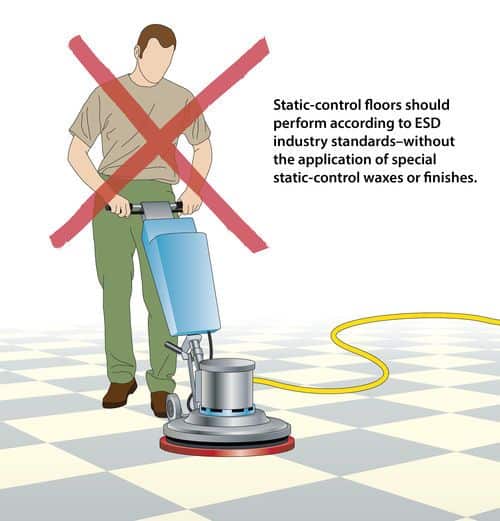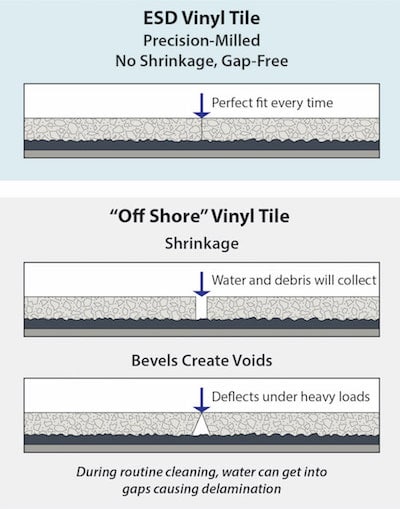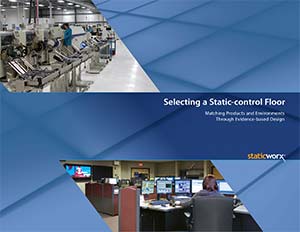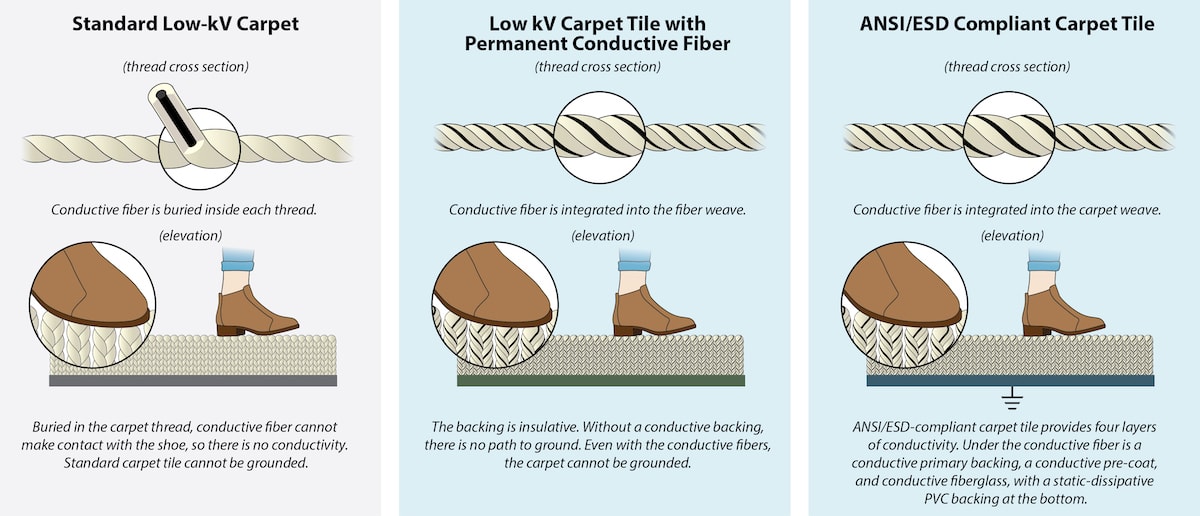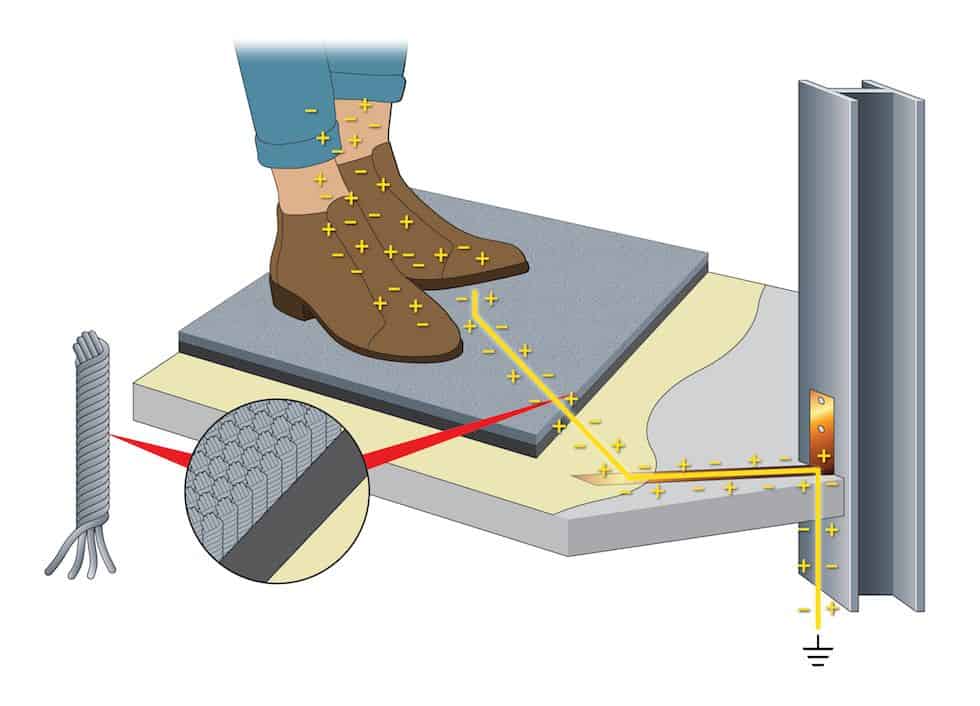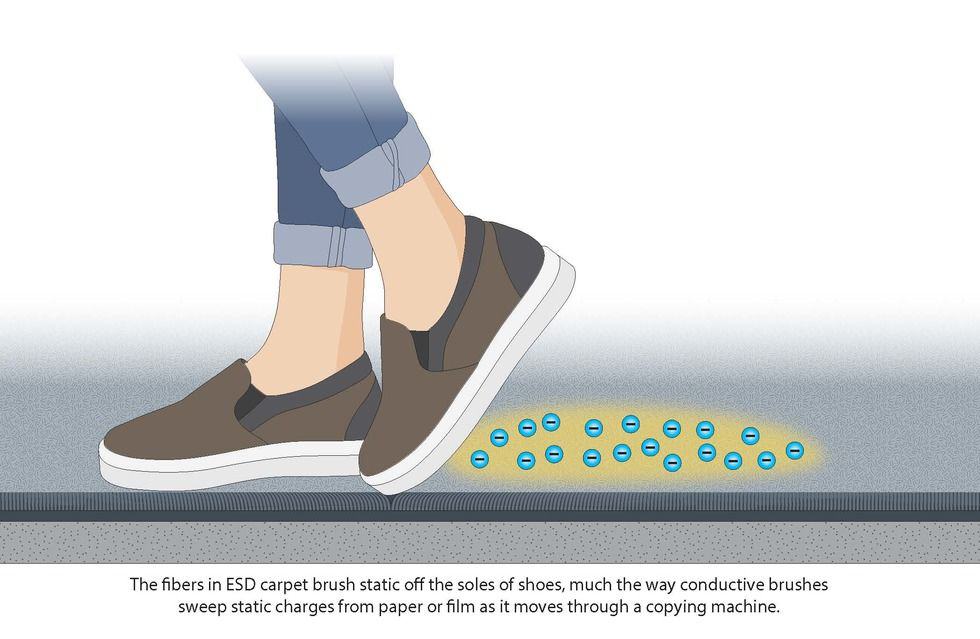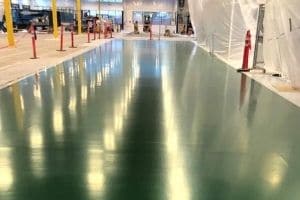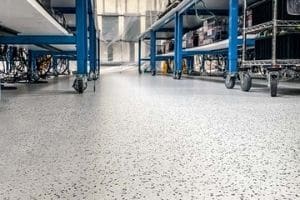
Facility Managers' Guide to Choosing ESD Flooring
[20 min read]
Post Sections
Property owners/facility managers face many challenges in selecting a static-free floor. Find out why more than one flooring material may be your best option.
Need additional information about specific ESD products? Learn more about the StaticWorx ESD flooring range.
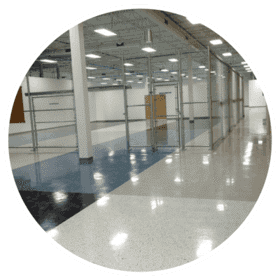
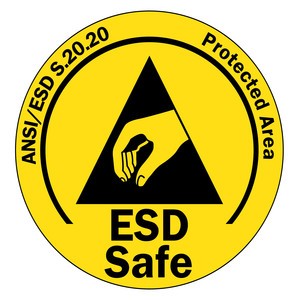 To safely and dependably manufacture, handle or use today’s lightning-fast, highly static-sensitive electronics, an ESD floor must not only ground-out static charges; the floor must prevent static charge generation from occurring in the first place. Recognizing its impact to their bottom line, facilities managers often agonize over which ESD flooring material to choose for their corporate environments. Recent significant changes to ESD standard ANSI/ESD S20.20, which de-emphasize the importance of conductivity in favor of charge generation, add to the difficulty of choosing a floor.
To safely and dependably manufacture, handle or use today’s lightning-fast, highly static-sensitive electronics, an ESD floor must not only ground-out static charges; the floor must prevent static charge generation from occurring in the first place. Recognizing its impact to their bottom line, facilities managers often agonize over which ESD flooring material to choose for their corporate environments. Recent significant changes to ESD standard ANSI/ESD S20.20, which de-emphasize the importance of conductivity in favor of charge generation, add to the difficulty of choosing a floor.
To safely and dependably manufacture, handle or use today’s lightning-fast, highly static-sensitive electronics, an ESD floor must not only ground-out static charges; the floor must prevent static charge generation from occurring in the first place. Recognizing its impact to their bottom line, facilities managers often agonize over which ESD flooring material to choose for their corporate environments. Recent significant changes to ESD standard ANSI/ESD S20.20, which de-emphasize the importance of conductivity in favor of charge generation, add to the difficulty of choosing a floor.
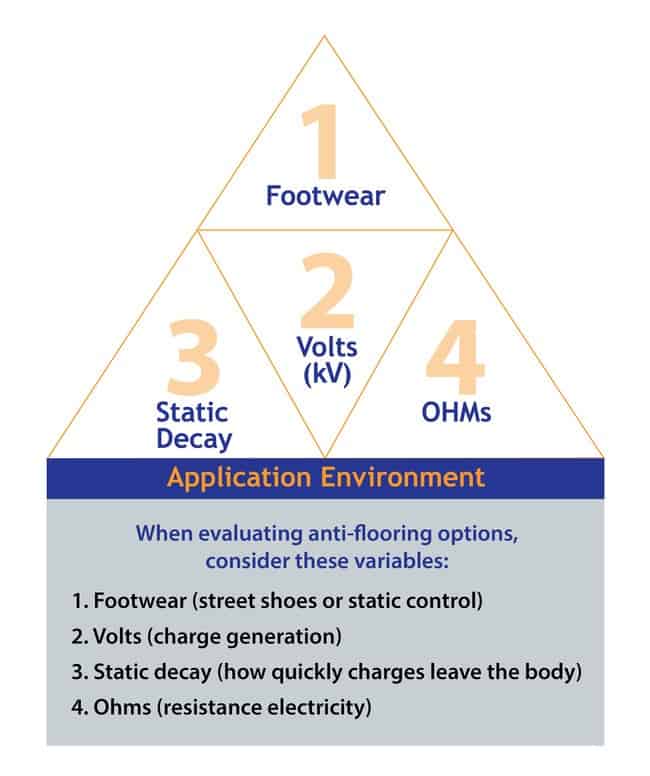
The problem is, the “one-size-fits-all” philosophy for static-control flooring typically yields compromised results. A decision might be based solely on the installed cost of the floor, for instance, rather than on the total cost of ownership*, resulting in unexpected long-term expenditures. For a lab, decision-makers may choose a seam- welded vinyl sheet floor, due to its perceived cleanliness, only to discover that most vinyl sheet flooring cannot pass the ANSI/ESD 97.2 charge generation testing with booties. Or swayed by one influential person—from shipping and receiving, for instance—the committee may decide to install a hard, chemical-resistant coating throughout the facility, even though 95 percent of the space resembles an office more than a factory.
Total cost of ownership includes initial material costs, along with the cost of routine maintenance, repair, and (if necessary) replacement due to wear and tear or material failure.
To solve the problem, a growing number of facilities managers and property owners are selecting different types of ESD flooring for different parts of their facility, often working with architects to help them create a functional, attractive, well-integrated environment.
Excellent Choices Abound
Today, attractive static-control versions of vinyl, epoxy, carpet tile and rubber materials all provide effective, long-term ESD mitigation. Each product has positive attributes and each also has potential drawbacks that should be understood and possibly addressed.
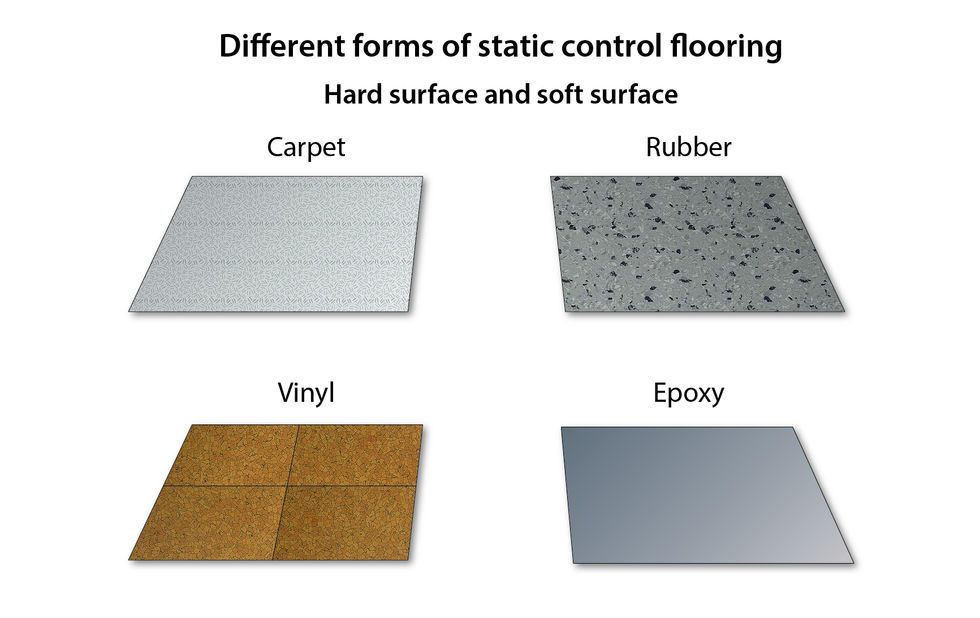

Static-control floors are designed to inhibit static generation. That’s why ESD floors are considered the first line of defense in preventing damage from random static discharge.
To protect mission-critical spaces, with no protocols mandating the use of special static-control footwear, ESD floors must perform two separate, equally important functions:
- Provide a traceable path to ground;
- Prevent static from accumulating as people walk.
Not all static-control floors perform both functions. ESD vinyl, for instance, does an excellent job of grounding people and equipment but does not inhibit static generation—unless every person walking through the space wears special ESD footwear. In electronics manufacturing or handling operations, where footwear is tightly controlled, vinyl is a great option. In a mission-critical space, where people wear street shoes, ESD vinyl would fail.
Important Note: only static-dissipative and conductive floors can be grounded.
Low kV, computer-grade floors are not groundable and do not prevent static generation. Likewise, standard floors installed with conductive adhesive or copper grounding strips do not provide a path to ground and offer no static protection.
ESD Solid Vinyl Tile (Conductive SVT)
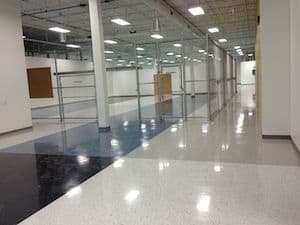
Inexpensive and Easy to Clean
Many facilities managers favor vinyl because of its reputation for being inexpensive and easy to clean. High-quality vinyl manufacturers, aware of the need to contain cleaning costs, have developed true no-wax ESD vinyl floors. This doesn’t mean the floor can’t be waxed with static-control floor finishes. Some owners/facilities managers like the hardness and glossy shine from a high-quality ESD finish like StaticWorx CoatZF. However, unlike cheaper static-dissipative (SDT) tiles, a good conductive SVT does not NEED waxes in order to eliminate static.
Manufacturers often recommend cleaning methods that do not involve finishes, polishes, or waxes. High speed buffing, or what maintenance professionals call “burnishing,” is a common method often recommended for cleaning. Using heat from the buffing equipment, burnishing melts and reseals the floor. We do not recommend burnishing: over time it can damage the surface of solid vinyl tile. A lower-cost alternative to burnishing is low-speed buffing, using a buffing compound like StaticWorx Formula 20.20. This maintenance method gives the facility manager the best of both worlds: a reflective high-shine floor and an ESD walking surface that meets the most stringent ESD specs.
Handled properly, maintaining a high-quality SVT conductive tile should cost less than epoxy and carpet tile and only marginally more than rubber.

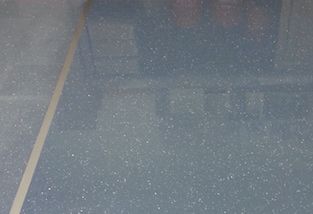
Can Be Installed Directly Over Old Floors
Using low VOC conductive pressure-sensitive adhesives allows some ESD vinyl tiles to be installed on top of old floors, such as VCT or epoxy. Before going this route, it is important to be sure that the new floor tiles will not shrink. Before buying any vinyl tile, ask the supplier where it was manufactured. Unlike vinyl manufactured in offshore plants, with fewer quality controls, tile made in North America is typically free of heavy metals, will not shrink, and will also meet all standards for squareness and electrical properties.
Must Be Used in Conjunction with ESD Footwear
The downside of vinyl is that it’s unsuited for use in areas where personnel are not required to wear special ESD footwear—or where ESD-protective mandates are in place but not stringently enforced. This includes most 24/7 mission-critical environments, such as call centers, emergency dispatch operations, and flight-control towers.
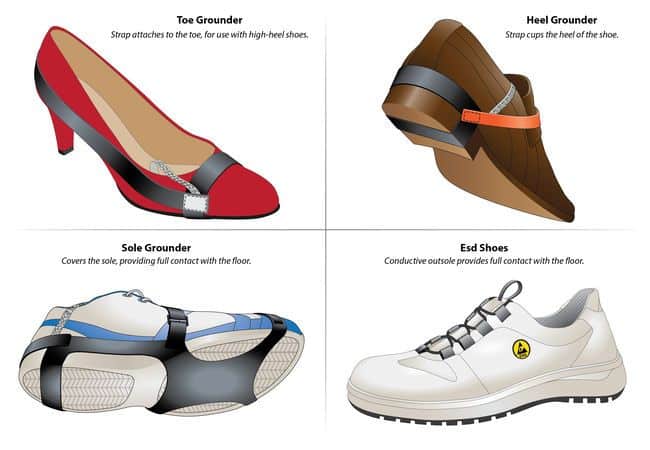
ESD footwear creates an electrical connection between the wearer and the floor, and conducts static charges away from the body to the surface of the conductive vinyl floor to ground—thus preventing static buildup. For any ESD-protected area (EPA) where protocols are mandated and enforced, conductive vinyl is an excellent choice.
ESD Epoxy
ESD epoxies are easy to install, durable, and attractive. Along with solid-colored coatings used in parking garages and aircraft hangars, new breeds of epoxies are available in patterns as well as in multiple colors and textures.
Inexpensive, first generation epoxies consist essentially of a black, carbon-loaded paint, creating a durable, no-frills, static-control surface.
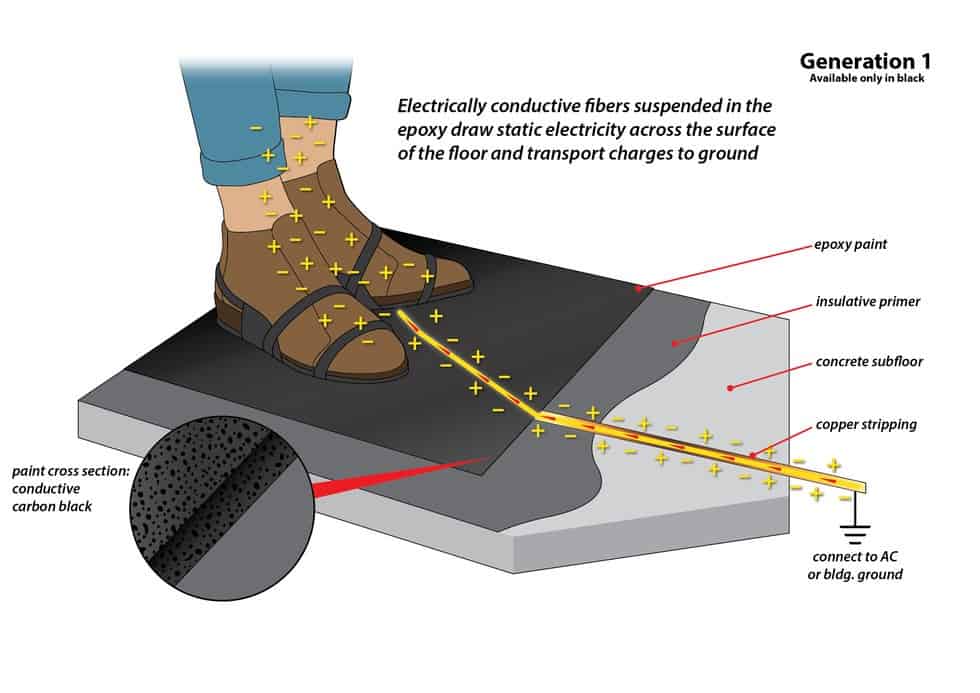

Second-generation epoxies layer a colorized semi-conductive topcoat over a buried black primer (with embedded carbon) as part of the overall thickness of the coating, providing redundant paths to ground.
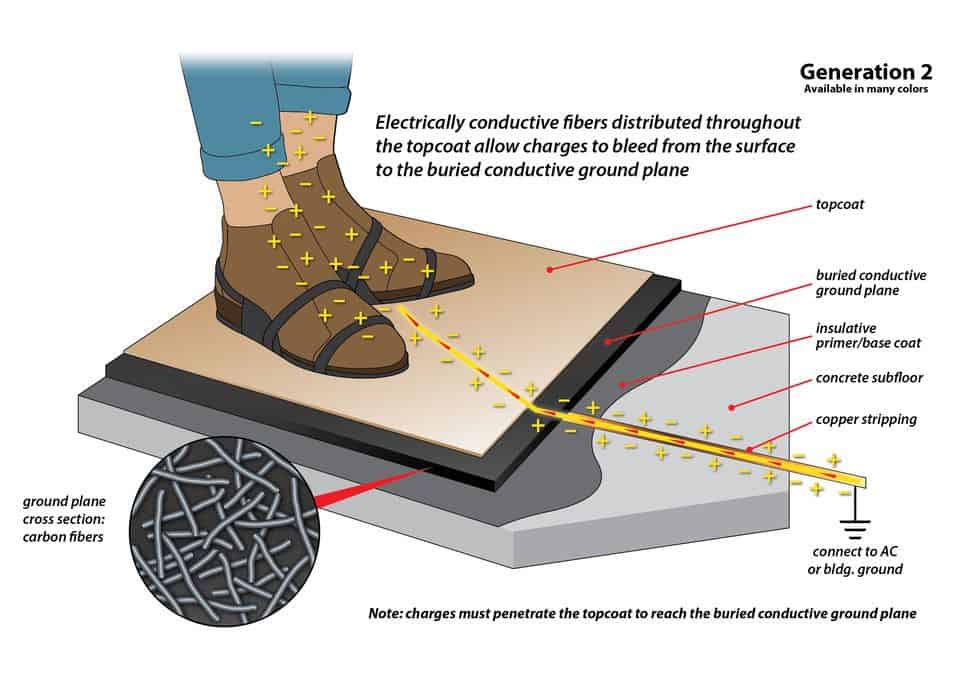

Newer technologies embed transparent conductive nanoparticles into a high-gloss topcoat, without the need for a conductive buried black primer—allowing for easy application, a wide array of colors, and superior static protection.


Installed properly, some high-quality ESD epoxies can (though may not) meet all necessary ESD standards.
Handles High Traffic and Heavy Loads
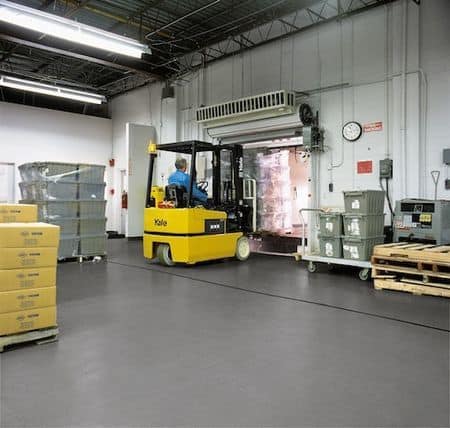
In facilities with high traffic and constant heavy loads, epoxies can be a practical flooring solution. Case in point: EMC Corporation in Franklin, MA. To identify the best looking, most durable product for their facility, EMC performed a robotic durability test, called “Project Einstein,” on the various flooring materials and products.
As part of the test, EMC rolled their 5000-pound computers across 10-foot-square samples of various ESD flooring options. The only flooring material the small wheel on the computers did not damage was a quartz-loaded epoxy.
Ergonomic Issues
The upside of epoxy, however, is also its downside: because the floor is ruggedly hard, it has no anti-fatigue attributes, and sound, bouncing off the hard surface, echoes throughout the facility, potentially creating noise issues.
Due to its rigidity and the shiny sleekness of its walking surface, epoxy can also present slip-and-fall issues.
Harder to Maintain than Perceived
In addition to its ergonomic downside, epoxy floors are not always color-stable. Over time, exposed to ultraviolet rays, epoxy can yellow or haze. Because newly-coated areas never match the adjacent aged surface, repairs are always conspicuous.
And it’s important to understand that, despite its intrinsic durability, epoxy scratches. Unlike vinyl, the scratches cannot be removed by buffing. As one facility manager put it, “Epoxy floors look their best the day before you move into your facility.”
Field Errors Can Result in Messy Installations
Perhaps the biggest problem with epoxy is that you don’t know for sure what you have or what the floor will look like until after it’s installed and has fully cured. Field errors, such as faulty mixing or improper floor prep, can cause messy or failed installations. To avoid field errors, ask the flooring contractor to install several test patches at the site immediately after blending the material.
Epoxy Coatings May Not Meet Current ESD Standards
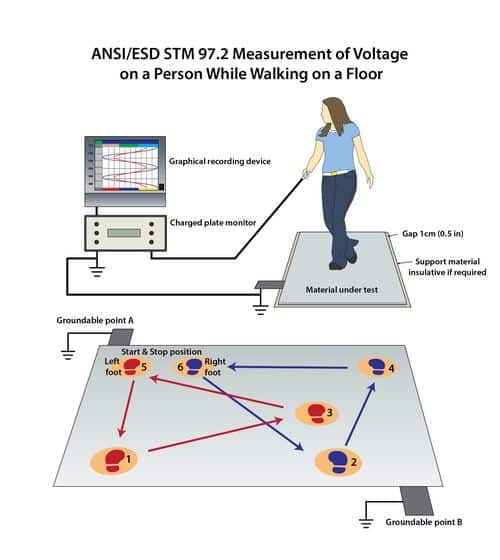
Over half of the ESD coatings on the market fail to meet the 2014 ANSI/ESD S20.20 100-volt maximum requirement for body voltage generation when using heel straps, the most common ESD footwear.
As epoxy controls static only on people wearing controlled ESD footwear, epoxy should never be used in environments where personnel or visitors will be wearing regular footwear.
Installed properly, some high-quality ESD epoxies can (though may not) meet all necessary ESD standards.
Handles High Traffic and Heavy Loads

In facilities with high traffic and constant heavy loads, epoxies can be a practical flooring solution. Case in point: EMC Corporation in Franklin, MA. To identify the best looking, most durable product for their facility, EMC performed a robotic durability test, called “Project Einstein,” on the various flooring materials and products.
As part of the test, EMC rolled their 5000-pound computers across 10-foot-square samples of various ESD flooring options. The only flooring material the small wheel on the computers did not damage was a quartz-loaded epoxy.
Ergonomic Issues
The upside of epoxy, however, is also its downside: because the floor is ruggedly hard, it has no anti-fatigue attributes, and sound, bouncing off the hard surface, echoes throughout the facility, potentially creating noise issues.
Due to its rigidity and the shiny sleekness of its walking surface, epoxy can also present slip-and-fall issues.
Harder to Maintain than Perceived
In addition to its ergonomic downside, epoxy floors are not always color-stable. Over time, exposed to ultraviolet rays, epoxy can yellow or haze. Because newly-coated areas never match the adjacent aged surface, repairs are always conspicuous.
And it’s important to understand that, despite its intrinsic durability, epoxy scratches. Unlike vinyl, the scratches cannot be removed by buffing. As one facility manager put it, “Epoxy floors look their best the day before you move into your facility.”
Field Errors Can Result in Messy Installations
Perhaps the biggest problem with epoxy is that you don’t know for sure what you have or what the floor will look like until after it’s installed and has fully cured. Field errors, such as faulty mixing or improper floor prep, can cause messy or failed installations. To avoid field errors, ask the flooring contractor to install several test patches at the site immediately after blending the material.
Epoxy Coatings May Not Meet Current ESD Standards
One word of caution: all ESD epoxy and urethane coatings should be tested thoroughly for ANSI/ESD S97.2 walking voltage properties. Many thick epoxy coatings will easily meet the conductivity requirements of ANSI/ESD S20.20—but resistance testing alone gives a one-dimensional view of performance.
Over half of the ESD coatings on the market fail to meet the 2014 ANSI/ESD S20.20 100-volt maximum requirement for body voltage generation when using heel straps, the most common ESD footwear.
As epoxy controls static only on people wearing controlled ESD footwear, epoxy should never be used in environments where personnel or visitors will be wearing regular footwear.
✓ visual selector guide;
✓ walking body voltage/low static generation;
✓ resistance requirements and testing;
✓ ESD flooring comparison;
✓ industry standards & test methods;
✓ key ESD terms
Static-Dissipative Carpet Tile
Easy to install and remove, static-dissipative carpet tiles are a popular choice among facilities managers, installers, and maintenance people. New glue-free installation methods, like StaticWorx GroundBridge™, enable a fast, ANSI/ESD-compliant installation over almost any subfloor, including concrete, old VCT, raised flooring panels, painted surfaces, or uneven concrete, lowering the cost of installation.
If the carpet is accidentally damaged, the damaged area is easily replaceable without the use of special tools or even the need to install new adhesive. Because carpet tile is durable and easy to clean, repair and replace, ESD carpet usually offers a tremendous amount of flexibility.
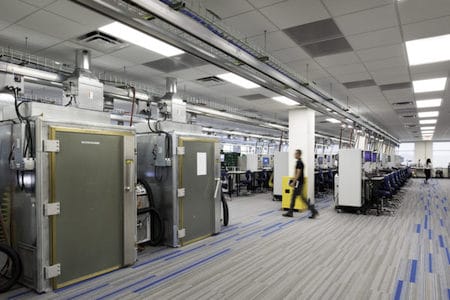
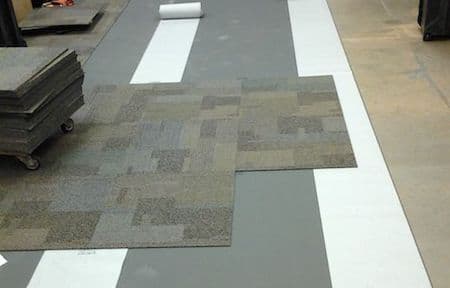
RND Designs Increase Lifecycle by 40% Over Monolithic Patterns
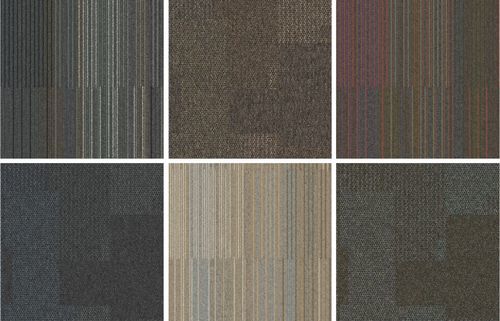
At one time, carpet tiles had to be installed monolithically. In layman’s terms, all tiles had to be oriented in the same direction. New, a monolithic installation looks absolutely seamless, almost as if the entire area is comprised of one large piece of carpet. This type of installation looks great—until a damaged tile requires replacement. The new tile stands out, appearing to be a different color than the existing floor, even if the new tile came from a carton of leftovers from the original batch. This visual deficiency becomes more apparent as an installation ages. Usually by the 4th or 5th year, due to wear in high traffic aisles and the mingling of old and new tile, a monolithic installation looks tired, and in need of replacement.
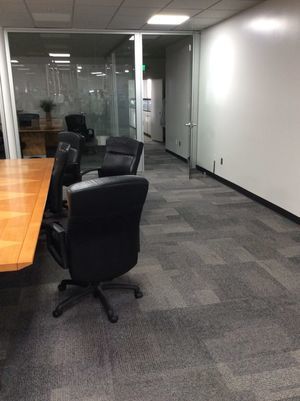
Today, carpet tiles such as ShadowFX SDC Patterns have a random non-directional (RND) design. These tiles can be installed with no concern for orienting the grain, direction, or pattern. Visually, the floor looks like a field of small random blocks—a collection of subtly changing textures with no evidence of delineation from one spot to the next. When RND tiles are replaced, there are no matching issues, so it’s nearly impossible to distinguish the new tile from the old.
RND technology also hides wear, extending the lifecycle of the carpet tile by nearly 40% —making static-dissipative RND tiles a great value for a manufacturing or assembly environment. Their increased lifecycle is the reason high-traffic public spaces, such as airports, have embraced RND designs around the world.
Ideal for Test and Assembly Areas
Mark Leininger, VP of corporate strategy and development at ABX Engineering in Burlingame, CA, has used carpet tiles for over eight years and found them to be the most effective solution for his SMT assembly and test areas.
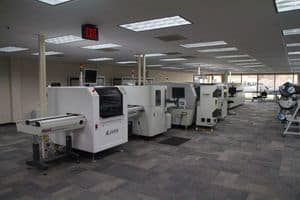
ABX takes ESD so seriously that they decided to make their entire facility into an ESD-protected area or ANSI/ESD S20.20 EPA. They have installed ShadowFX ESD carpet tile in all offices, conference rooms and even the company lobby.
Meets ESD Standards for Resistance and Body Voltage
“Shock-Free” Low kV Carpet Cannot Be Grounded
In the past, to inhibit static generation, carpet manufacturers thought they had only to prevent people from getting shocks when they walked across the carpeted floor. By preventing shocks and static sparks on people who touched the components, they believed—incorrectly—computer equipment would also be safe from static discharge.
By using anti-static additives or tufting the carpet with carbon bi-components, housed inside the core of the yarn fibers, they succeeded in preventing static shocks. But some of the antistatic agents worked by drawing moisture from the air, making the conductivity of the carpet dependent upon relative humidity; and topically-applied anti-stats wore off over time. Housing carbon bi-components in the core of the yarn fibers insulated them from the carpet’s walking surface; without electrical contact points, the static-dissipative properties of the carbon were isolated and ineffective.
While ideal for residential and generic commercial applications, this so-called “antistatic carpet”—sometimes referred to as “shock-free” or “low-kV” carpet—cannot be grounded and does not come close to meeting ANSI/ESD S20.20 —the ESD industry standard parameters for conductivity and charge generation necessary in electronics manufacturing and handling.
Reliable Path to Ground and Low Charge Generating
Today, in the tufting process, heavier denier carbon fibers can be woven into the yarn bundle, creating an almost infinite number of contact points, providing a fast and reliable path to ground.
With (non-mill) branded yarns with low modification ratios, from yarn manufacturers such as Invista, Aquafil and Universal, carpet tiles can be produced to withstand severe punishment and high traffic.
Perhaps the biggest electrical advantage of ESD carpet tile is its ability to inhibit static on people—whether everyone in the space wears the correct ESD footwear or if they wear regular street shoes.
Vulnerable to Chemical Spills, Forklifts and Pallet Jacks
As with any material, carpet has its disadvantages. The one area ABX chose not to carpet was the approximately 3-foot perimeter around an aqueous cleaner. To handle spills, they installed Ameriworx vinyl tile, using the same adhesive as the carpet tiles. If the machines are ever moved, ABX will be able to easily pull up the vinyl and swap out the area with carpet tile.
Carpet is not well suited to accommodate warehouse areas where heavy loads are constantly moved with forklifts and pallet jacks. Carpet also has a low resistance to chemicals and solvents.
RND Designs Increase Lifecycle by 40% Over Monolithic Patterns

At one time, carpet tiles had to be installed monolithically. In layman’s terms, all tiles had to be oriented in the same direction. New, a monolithic installation looks absolutely seamless, almost as if the entire area is comprised of one large piece of carpet. This type of installation looks great—until a damaged tile requires replacement. The new tile stands out, appearing to be a different color than the existing floor, even if the new tile came from a carton of leftovers from the original batch. This visual deficiency becomes more apparent as an installation ages. Usually by the 4th or 5th year, due to wear in high traffic aisles and the mingling of old and new tile, a monolithic installation looks tired, and in need of replacement.

Today, carpet tiles such as ShadowFX SDC Patterns have a random non-directional (RND) design. These tiles can be installed with no concern for orienting the grain, direction, or pattern. Visually, the floor looks like a field of small random blocks—a collection of subtly changing textures with no evidence of delineation from one spot to the next. When RND tiles are replaced, there are no matching issues, so it’s nearly impossible to distinguish the new tile from the old.
RND technology also hides wear, extending the lifecycle of the carpet tile by nearly 40% —making static-dissipative RND tiles a great value for a manufacturing or assembly environment. Their increased lifecycle is the reason high-traffic public spaces, such as airports, have embraced RND designs around the world.
Ideal for Test and Assembly Areas
Mark Leininger, VP of corporate strategy and development at ABX Engineering in Burlingame, CA, has used carpet tiles for over eight years and found them to be the most effective solution for his SMT assembly and test areas.

ABX takes ESD so seriously that they decided to make their entire facility into an ESD-protected area or ANSI/ESD S20.20 EPA. They have installed ShadowFX ESD carpet tile in all offices, conference rooms and even the company lobby.
Meets ESD Standards for Resistance and Body Voltage
“Shock-Free” Low kV Carpet Cannot Be Grounded
In the past, to inhibit static generation, carpet manufacturers thought they had only to prevent people from getting shocks when they walked across the carpeted floor. By preventing shocks and static sparks on people who touched the components, they believed—incorrectly—computer equipment would also be safe from static discharge.
By using anti-static additives or tufting the carpet with carbon bi-components, housed inside the core of the yarn fibers, they succeeded in preventing static shocks. But some of the antistatic agents worked by drawing moisture from the air, making the conductivity of the carpet dependent upon relative humidity; and topically-applied anti-stats wore off over time. Housing carbon bi-components in the core of the yarn fibers insulated them from the carpet’s walking surface; without electrical contact points, the static-dissipative properties of the carbon were isolated and ineffective.
While ideal for residential and generic commercial applications, this so-called “antistatic carpet”—sometimes referred to as “shock-free” or “low-kV” carpet—cannot be grounded and does not come close to meeting ANSI/ESD S20.20 —the ESD industry standard parameters for conductivity and charge generation necessary in electronics manufacturing and handling.
Reliable Path to Ground and Low Charge Generating
Today, in the tufting process, heavier denier carbon fibers can be woven into the yarn bundle, creating an almost infinite number of contact points, providing a fast and reliable path to ground.
With (non-mill) branded yarns with low modification ratios, from yarn manufacturers such as Invista, Aquafil and Universal, carpet tiles can be produced to withstand severe punishment and high traffic.
Perhaps the biggest electrical advantage of ESD carpet tile is its ability to inhibit static on people—whether everyone in the space wears the correct ESD footwear or if they wear regular street shoes.
Vulnerable to Chemical Spills, Forklifts and Pallet Jacks
As with any material, carpet has its disadvantages. The one area ABX chose not to carpet was the approximately 3-foot perimeter around an aqueous cleaner. To handle spills, they installed Ameriworx vinyl tile, using the same adhesive as the carpet tiles. If the machines are ever moved, ABX will be able to easily pull up the vinyl and swap out the area with carpet tile.
Carpet is not well suited to accommodate warehouse areas where heavy loads are constantly moved with forklifts and pallet jacks. Carpet also has a low resistance to chemicals and solvents.
ESD Rubber
Conductive rubber floors, such as StaticWorx Eclipse and Eclipse GF, incorporate carbon contact points into the material, creating an attractive terrazzo-like pattern. Ergonomically, rubber is a better anti-fatigue floor than either epoxy or vinyl; and like carpet, rubber dampens noise from rolling carts and automatic equipment.
Less porous than vinyl, rubber is also easier to clean, wash, and maintain. Rubber can be washed with neutral cleaners diluted with water. Finishes and polishes are completely unnecessary for the life of the floor. After a two-year study of over 20 flooring types, AT&T found rubber to be the easiest and least costly ESD surface to care for.
Conductive Rubber Best for Ultra-Sensitive ESD Applications
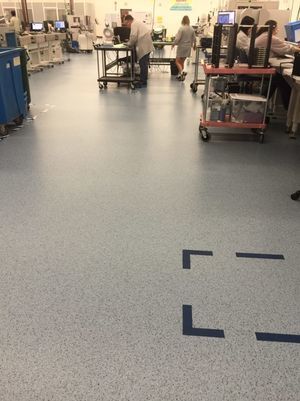
Rubber, the gold standard of flooring materials, meets all of the recommended parameters of ANSI/ESD S20-20 Because rubber is a naturally low-static-generating material, with a chemical makeup that’s sufficiently close to the soles of most shoes, ESD rubber generates very little static on people as they walk across the floor (walking body voltage), wearing footwear.
With its low-static-generating properties, conductive rubber used in conjunction with any type of ESD footwear was rated by The ESD Journal as the best flooring solution for ultra-sensitive class 0 ESD applications, where static charges of over 20 volts cannot be tolerated.
ESD rubber not only performs well in ESD-protected environments that mandate the use of grounded footwear; it is also highly effective at preventing static in areas where grounded footwear is not or cannot be used—places such as mission-critical command centers, computer labs, 9-1-1 call centers, and flight towers.
In a recent ASHRAE-sponsored study of ESD flooring options for data centers, rubber was found to be the most effective ESD floor at any relative humidity with any type of footwear.
Static-Dissipative Rubber Does Not Meet ANSI/ESD S20.20
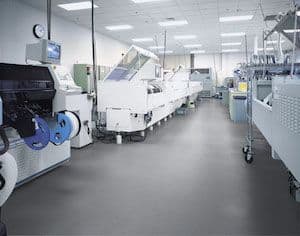
Carbon, on the other hand, is a permanent conductor, assuring ANSI/ESD S20.20 compliance for the life of the floor.
Low Total Cost of Ownership
Despite its many advantages, the initial material cost of ESD rubber is substantially higher than other flooring options. As vulcanized rubber is durable and inexpensive to maintain, the total cost of ownership for rubber is low—making it a good choice for companies concerned about the long-term implications of their investment.
Conductive rubber floors, such as StaticWorx Eclipse and Eclipse GF, incorporate carbon contact points into the material, creating an attractive terrazzo-like pattern. Ergonomically, rubber is a better anti-fatigue floor than either epoxy or vinyl; and like carpet, rubber dampens noise from rolling carts and automatic equipment.
Less porous than vinyl, rubber is also easier to clean, wash, and maintain. Rubber can be washed with neutral cleaners diluted with water. Finishes and polishes are completely unnecessary for the life of the floor. After a two-year study of over 20 flooring types, AT&T found rubber to be the easiest and least costly ESD surface to care for.
Conductive Rubber Best for Ultra-Sensitive ESD Applications

Rubber, the gold standard of flooring materials, meets all of the recommended parameters of ANSI/ESD S.20-20. Because rubber is a naturally low-static-generating material, with a chemical makeup that’s sufficiently close to the soles of most shoes, ESD rubber generates very little static on people as they walk across the floor (walking body voltage), wearing footwear.
With its low-static-generating properties, conductive rubber used in conjunction with any type of ESD footwear was rated by The ESD Journal as the best flooring solution for ultra-sensitive class 0 ESD applications, where static charges of over 20 volts cannot be tolerated.
ESD rubber not only performs well in ESD-protected environments that mandate the use of grounded footwear; it is also highly effective at preventing static in areas where grounded footwear is not or cannot be used—places such as mission-critical command centers, computer labs, 9-1-1 call centers, and flight towers.
In a recent ASHRAE-sponsored study of ESD flooring options for data centers, rubber was found to be the most effective ESD floor at any relative humidity with any type of footwear.
Static-Dissipative Rubber Does Not Meet ANSI/ESD S20.20
It is important to be sure that the selected rubber is carbon-loaded, and not rendered static-dissipative by crosslinking chemistry. The resistive properties of crosslinked static-dissipative rubber flooring exceed the recommended system resistance parameters of ANSI/ESD S20.20. Over time, crosslink additives lose their conductivity, rendering the floor non-compliant.
Carbon, on the other hand, is a permanent conductor, assuring ANSI/ESD S20.20 compliance for the life of the floor.
Low Total Cost of Ownership
Despite its many advantages, the initial material cost of ESD rubber is substantially higher than other flooring options. As vulcanized rubber is durable and inexpensive to maintain, the total cost of ownership for rubber is low—making it a good choice for companies concerned about the long-term implications of their investment.
The Best Solution is Often a Combination of Materials
To address the diverse needs of various departments, some facilities managers combine flooring solutions. EIT, a circuit board and electronics assembly manufacturer, located in Leesburg, Virginia, installed AmeriWorx® ROX vinyl tile in their SMT areas and ShadowFX™ random non-directional carpet in their engineering areas and conference room.
Like ABX Engineering, cited above, EIT staff can safely move static-sensitive devices anywhere in their facility, whether to a manufacturing location, a conference room, or the company president’s office.
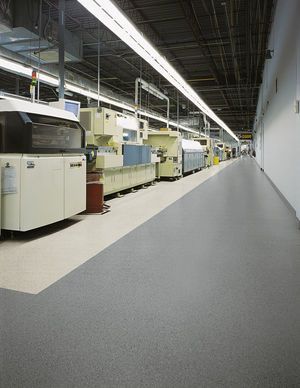
It has become a trend at tier-one electronic manufacturing service companies (EMS), such as Plexus and Benchmark Electronics, to use inexpensive, thin-mil ESD epoxies in shipping and receiving areas, and clean, attractive, shiny white Ameriworx ESD vinyl in the rest of the facility.
Some facilities, such as the Lowell Police Department 9-1-1 dispatch center, in Lowell, Massachusetts, use two or more materials in a single space. The Lowell P.D. installed carpet tile under desks, and rubber in the adjacent, high-traffic area by monitoring screens.
To address the diverse needs of various departments, some facilities managers combine flooring solutions. EIT, a circuit board and electronics assembly manufacturer, located in Leesburg, Virginia, installed AmeriWorx® ROX vinyl tile in their SMT areas and ShadowFX™ random non-directional carpet in their engineering areas and conference room.
Like ABX Engineering, cited above, EIT staff can safely move static-sensitive devices anywhere in their facility, whether to a manufacturing location, a conference room, or the company president’s office.
Noise and employee comfort were major factors influencing the flooring choice at General Electric in Charlottesville, Virginia. They chose Eclipse™ rubber sheet flooring for main aisle-ways and ShadowFX carpet for their assembly areas.
It has become a trend at tier-one electronic manufacturing service companies (EMS), such as Plexus and Benchmark Electronics, to use inexpensive, thin-mil ESD epoxies in shipping and receiving areas, and clean, attractive, shiny white Ameriworx ESD vinyl in the rest of the facility.
Some facilities, such as the Lowell Police Department 9-1-1 dispatch center, in Lowell, Massachusetts, use two or more materials in a single space. The Lowell P.D. installed carpet tile under desks, and rubber in the adjacent, high-traffic area by monitoring screens.


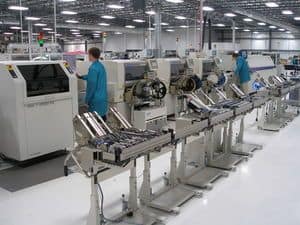
With a qualified ESD expert, experienced in solving static problems, and, if desired, an architect to integrate the design, you can devise a floor covering strategy that addresses all of your facility’s needs.
Excellent ESD flooring materials abound. Facilities managers need not stress over which one floor is the best option for their corporate environment. For better results, consider each area separately: check the ESD parameters required for the space, factor in physical, ergonomic, and maintenance requirements, and choose the material, or combination of materials, best-suited for that particular environment.
With a qualified ESD expert, experienced in solving static problems, and, if desired, an architect to integrate the design, you can devise a floor covering strategy that addresses all of your facility’s needs.
Get in Touch
The form below will help us better understand your needs and get you as quickly as possible to the right person. We look forward to helping you solve your static problem!
You can expect a response within 24 hours. For faster service, please give us a call: 617-923-2000
"*" indicates required fields
Visit our privacy policy to find out how we process data.
Learning Center Articles
- ESD Basics
- Installation & Maintenance
- Selecting & Specifying an ESD Floor
- Technical Information
- 7 Common Mistakes Selecting an ESD floor
- A Guide to ESD Flooring Selection
- Avoid Costly Failures: What You Need to Know When Specifying ESD Flooring
- Choosing ESD Flooring for:
- ESD Footwear: What Is It and When Is It Necessary?
- ESD Footwear for Electronics Manufacturing and Handling Applications
- Facility Managers’ Guide to Selecting ESD Flooring
- The Need for Due Diligence in Specifying Static-Free Flooring
- Standard of Care for Specifying Floors in Mission-Critical Spaces
- Understanding the Hidden Costs of ESD Flooring
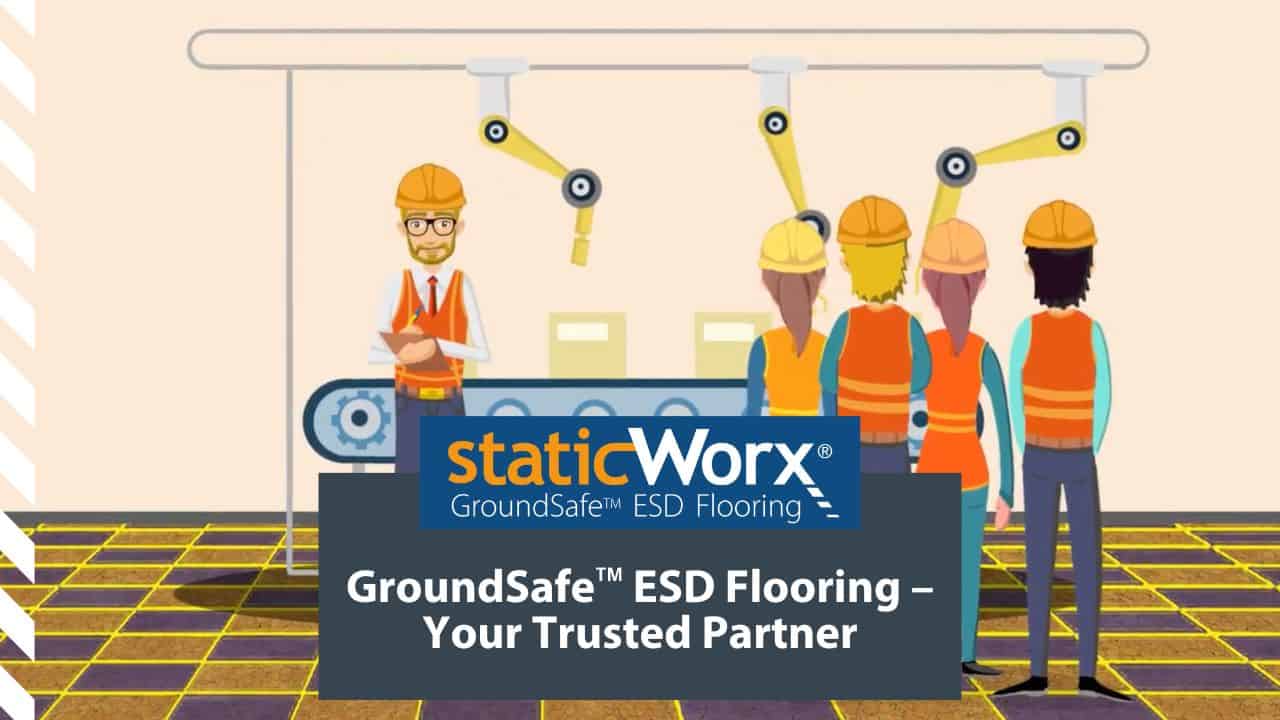
StaticWorx high-performance static-control floors protect electronic components, explosives, and high-speed computers from damage caused by static electricity. ESD flooring is part of a system. Choices should always be based on objective, researched evidence. When you partner with us, we look at all possible items that may need to integrate with the floor, and, focusing on your goals and objectives, help you find the right floor for your application.



